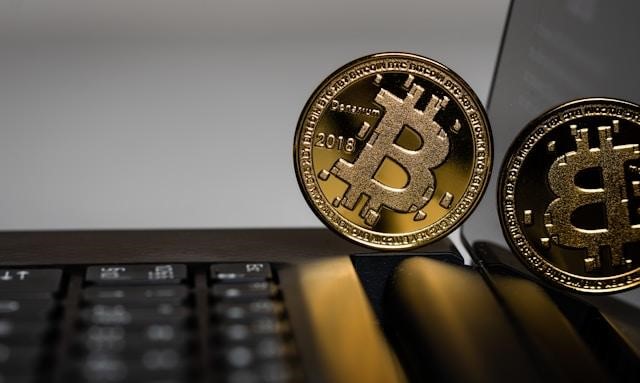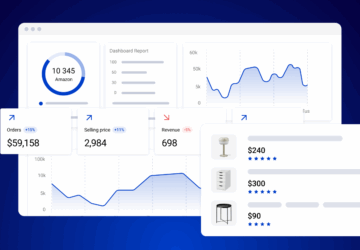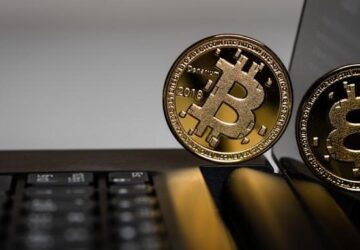Navigating the world of Bitcoin ATMs is like setting sail in the vast ocean of digital currency, with you at the helm ready to chart a course from cash to crypto.
You’ll want to know how to locate your nearest Bitcoin ATM and what steps you’ll need to take before you can transform your tangible bills into digital gold.
Along this journey, you’ll also discover the importance of security measures to keep your transaction smooth and your funds safe.
But before you embark, there’s a myriad of considerations and tips that could make the difference between smooth sailing and choppy waters. Let’s explore how to use a Bitcoin ATM near you today, ensuring you’re well-equipped for this financial voyage.
Understanding Bitcoin ATMs
Bitcoin ATMs offer a convenient way to buy and sell Bitcoin, acting as physical points where you can engage directly with your digital assets. Unlike traditional ATMs that dispense your country’s currency, these machines connect you to the Bitcoin network, allowing you to exchange fiat money for Bitcoin and vice versa.
You’ll find that using a Bitcoin ATM is straightforward. First, you’ll need a digital wallet—a place to store your Bitcoin. This can be an app on your smartphone or a software program on your computer.
When you’re ready to transact, you’ll interact with the ATM’s interface, which guides you through the process. For buying Bitcoin, you input the amount of fiat currency you want to exchange, scan your wallet’s QR code to provide your Bitcoin address, insert your cash, and confirm the transaction. The Bitcoin is then transferred to your wallet.
Selling Bitcoin involves sending Bitcoin to the ATM’s address in exchange for cash. Remember, transactions often include a fee, typically a percentage of the transaction amount. It’s important to be aware of these fees to ensure you’re getting a fair exchange rate.
Finding Your Nearest Machine
Now that you’re familiar with how Bitcoin ATMs work, let’s explore how to locate the nearest one to you.
Finding a Bitcoin ATM nearby is easier than you might think. The first step is to use a dedicated online map. Websites like CoinATMRadar offer comprehensive directories of Bitcoin ATMs globally, allowing you to search by your current location. These platforms not only show you the exact locations but also provide details about each machine, including supported cryptocurrencies, transaction fees, and limits.
Don’t forget to leverage your smartphone, as there are several apps designed to help you find Bitcoin ATMs on the go. These apps often offer additional features, such as directions to the ATM, user reviews, and the current status of the machine (e.g., online or offline).
Social media and cryptocurrency forums can also be invaluable resources. Many crypto enthusiasts share their experiences and recommendations for Bitcoin ATMs in various communities online. This can give you insight into the most reliable and user-friendly machines in your area.
Preparing for Your Transaction
Before heading to your chosen Bitcoin ATM, it’s essential to ensure you’re fully prepared for the transaction. This means having your digital wallet ready. If you don’t already have one, you’ll need to set one up. There are various types of wallets available, including mobile, desktop, and hardware. Choose one that best fits your security and convenience needs.
Next, make sure you’ve got a valid ID with you. Many Bitcoin ATMs require some form of identification for transactions as part of regulatory compliance. This could be a driver’s license or a passport. Being prepared with this can save you time and hassle.
Also, be clear about how much you intend to transact. Bitcoin ATMs typically have transaction limits, so knowing how much you want to buy or sell in advance can help you plan accordingly. Plus, being aware of the current exchange rate for Bitcoin can help you make informed decisions about the amount to transact.
Lastly, ensure you’ve got enough cash if you’re buying, or be prepared with the amount of Bitcoin you wish to sell. Remember, transaction fees apply, so factor these into your calculations to avoid surprises.
Conducting the Exchange
Having prepared for your transaction, it’s time to execute the exchange at the Bitcoin ATM.
Firstly, locate the ATM and verify it’s operational. Once you’re in front of the machine, select the option to buy Bitcoin. You’ll be prompted to input the amount of cash you wish to exchange. It’s crucial to know the transaction limits, as these vary by machine.
Next, the ATM will ask for your Bitcoin wallet address. You can either scan the QR code of your wallet or manually enter the address. Double-check for accuracy; sending Bitcoin to the wrong address means you’ll likely lose your funds.
After confirming your wallet address, insert your cash into the machine. The screen will display the amount of Bitcoin you’re buying and the current exchange rate. Confirm the transaction details are correct before proceeding.
Security Measures to Consider
When using a Bitcoin ATM, it’s crucial to prioritize your security to protect your funds and personal information. Always choose ATMs in well-lit, public locations to minimize the risk of theft or tampering. Before you start your transaction, take a moment to inspect the machine. Look for any unusual attachments or devices that could be skimmers meant to steal your information. If something feels off, trust your gut and find another ATM.
Don’t forget to check the ATM’s transaction fees ahead of time. High fees can be a red flag for a less reputable machine. Additionally, ensure the ATM is from a known and trusted operator. This information is typically displayed on the machine itself or the operator’s website.
Be mindful of your surroundings during the transaction. Shield the keypad when entering your PIN or any sensitive information to prevent shoulder surfing. After completing your transaction, immediately secure your receipt, cash, and any other sensitive information. Remember, public Wi-Fi networks can be unsafe, so avoid conducting transactions while connected to them.
Lastly, always review your transaction details for accuracy before confirming. Taking these steps can significantly reduce your risk of encountering security issues at a Bitcoin ATM.
Troubleshooting Common Issues
After ensuring your safety at a Bitcoin ATM, you might still encounter technical issues that need addressing. Common problems include machine errors, failed transactions, or difficulties in scanning QR codes. Don’t panic; there’s usually a straightforward fix for these issues.
If you’re facing a machine error or the ATM seems unresponsive, first check for any error messages on the screen. These can often guide you to a simple solution. If that doesn’t work, try restarting the transaction process. Sometimes, just giving it a second go can clear up the glitch.
Failed transactions are another headache you might run into. If your transaction doesn’t go through but you’ve been charged, you’ll need to contact the customer service of the ATM operator. Keep your transaction receipt or any transaction IDs handy, as you’ll need them for verification.
Scanning QR codes can sometimes be tricky due to poor lighting or a smudged camera lens. Make sure your phone’s camera is clean and try adjusting the angle or distance from the scanner. If all else fails, manually entering the wallet address, though more tedious, is a fail-safe method.
Conclusion
Now that you’ve got the lowdown on Bitcoin ATMs, finding and using one should be a breeze. Remember to locate your nearest machine, prep for the transaction, and follow the steps to exchange cash for crypto securely.
Keep in mind the security measures and don’t hesitate to troubleshoot if needed. With this knowledge, you’re ready to navigate the world of Bitcoin ATMs confidently.
So, go ahead, give it a try and step into the future of finance today.







